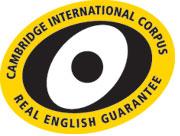 《劍橋國際語料庫》到底是什麼?
《劍橋國際語料庫》到底是什麼?
《劍橋國際語料庫》(Cambridge International Corpus)是劍橋大學出版社過去十年多來收集英語系國家母語人士每天的對話及書寫的語言,彙整大量來自廣播電視、報章雜誌等真實使用過的文句,透過電腦語言對比分析的技術,讓人們了解現今母語人士如何使用英語、頻率最高的說法以及最新的語言為何的資料庫。劍橋國際語料庫中有超過一千萬筆資料,透過這些資料可以幫助我們學習最真實的語言。
劍橋大學出版社的作者們非常幸運可以使用劍橋國際語料庫(CIC),那是擁有一千多萬個口說和書面英語的語料庫。所有的文章都儲存在一個資料庫中,並且可以用各種方式搜尋來顯示實際的用法。因此,我可以從數以百計的商業報章新聞、幾十個鐘頭的商業會議和商業教授的講授內容中得到商業英文的資料。以上所提及的來源在此我稱之為「資料」。
典型特色
關於商業英語的一個大特色就是字常常是由兩個、三個甚至四個字結合而成。學習者必須了解這些複合字,而 Business Vocabulary in Use 就著重於此特色。這塊是我將強調的部份,但語料庫還可以闡明語言中許多其他的部份。
就拿 competition(競爭)這個字來說,CIC 在短短幾秒鐘內便出現 337 個搭配字,這麼大的數量可能連最熱衷的學習者都無法消化。然而,ELT 作者所扮演的角色之ㄧ就是簡化和選擇,從語料庫的內容中選出最常用和最有趣的語言特色。因此,在 Business Vocabulary in Use Advanced 有關 competition 的單元中包含了以下項目:
Cut-throat(割喉競爭,價格戰)
Ferocious(殘忍的)
Fierce(激烈的)
Intense(強烈的)
Keen(激烈的)
Low-key(低調的)
Stiff(昂貴的)
Tough(強硬的)
有些字我沒有提到,但有出現在書中的搭配字表中,像是 strong(強硬的)、 direct(直接的)、 intensified(強化)和 tougher(更強硬的)。很有趣的一點是「競爭」前面最常搭配的字和字本身的強度相關。
學生常常會問老師兩個相似字之間的差異,以英語為母語或近母語的老師來說,他們當然有較準確的「直覺」去使用典型英語。但教室中會出現的危機(我自己就曾做過!)就是要舉例想都沒想過答案、理論上含糊地,但卻又深奧的兩個字的「本質」。語料庫可以提供使用語言的實例,並加強那些「直覺」(或是其他的方面)。就拿 competing(競爭)和competitive(競爭性的)來說吧!搭配字表顯示出最常出現在 competing 後的搭配字是 products(產品)、 bids(出價)、 offerings(出售物)、 suppliers(供應商)和 technologies(技術)。
而在 competitive 之後的搭配字有 product(產品)、 position(位置)和 pressure(壓力)。我根據這些資料整理了以下重點:competing 和 competitive 是和 competition 相關的形容詞。兩間公司可能會生產 competing products,也就是和對方競爭的產品。而 competitive product 是同一類產品中,真的有實際特殊優勢的產品。
以下為 competing 的搭配表:
|
|
bids |
price offers for a company in a takeover |
|
competing |
offerings |
products from different companies |
|
|
suppliers |
companies offering similar products or services |
|
|
technologies |
technical ways of doing something |
以下為 competitive 的搭配表:
|
|
position |
where a company is in relation to its competitors in terms of size, growth, etc |
|
|
pressure |
the force that one competitor can bring to bear in relation to another |
|
competitive |
prices |
ones that are similar to or lower than those for similar products |
|
|
threat |
something that one competitor may do to weaken another's position |
|
|
advantage/edge |
superior products, performance etc that a competitor can offer in relation to others |
|
|
strategy |
a plan or plans for success in relation to competitors, and the study of this in business schools |
分析資料的呈現與實際運用的差異
我先前所提到的例子是造句加以描述意思,而這對寫教材的作者和對老師來說都是個問題。不論怎麼聽,編造出來的例子都顯得非常呆板。連我們這些深諳語言使用的老師和作者們、這些教學法的專家們編造出來的也不例外。就算教材的作者不使用語料庫的實例,語料庫中的資料仍提供了運作的基礎,也就是激發我本身無法編造出來的例子靈感。以下的練習活動和我先前提到的重點相關,都是來自資料庫且大多沒有更動過。
17.2 Look at section B. Match the two parts of these extracts containing expressions with competing.
|
1. What is to stop supposedly competing |
a) bids from mining giants Inco Ltd and Falconbridge Ltd. |
|
2. Commtouch can position itself in the middle of the competing |
b) suppliers from secretly agreeing to keep prices high? |
|
3. Diamond Fields Resources Inc was the target of competing |
c) offerings, with prices ranging from $300 to $450. |
|
4. The software is 25 per cent cheaper than competing |
d) technologies by offering 'unified messaging solutions'. |
我一直都很喜歡以上這類的配對練習,因為它能讓學習者充分思考相關句子的意思,就和大多的填空練習一樣。
17.3 Look at section B again. Complete the sentences with appropriate forms of words that can follow competitive.
1. He was criticised for being too Eurocentric and failing to pay sufficient attention to the competitive ________ from south-east Asia.
2. The trick is to find businesses that can sustain their performances over the long term and have some competitive ________ to keep them ahead of the competition. (2 possibilities)
3. For the price-conscious consumer, alternative retail outlets can offer organic food at more competitive ______ .
4. First Chicago will enhance its competitive ________ and boost its financial growth through the transaction, which is expected to immediately add to earnings.
5. Mall stores are under the most competitive ________ that they've been under in their 40-year history, with new discounters and superstores increasingly moving in alongside traditional malls.
6. Decades of management theorising around the world have produced mountains of books, many of which promise to deliver the secrets of success. But there is no consensus on competitive ________ .
在此學習者又一次得思考句子的意思,因為填空在有影響力的溝通內容中佔了很重要的一部份。為了要完成,句子很有可能是用編造的,然而編造的通常不會像真實的那麼好。
真實語言的力量:經篩選&未經篩選
我以資料和 Business Vocabulary in Use Advanced 裡的練習說明這篇文章,但仍有些基本的重點要提。現在有許許多多的設備可以讓教師和學習者輕鬆使用真實的語言,因為愈來愈多的字典、文法書和慣用法書都用語料庫中的資料。有些是特別為學習者設計,而有些適合高階學習者或教師使用,像是高階字典。不論是哪一種皆提供我們接觸真實語言的管道,而那些真實語言是早在二十五年前就存在的。這一切都要感謝作者和編者他們能使用語料庫中的語言以及擁有分析的工具。我們可以說這些教學設備「篩選」了語言並將它處理成教學法的現成語塊。
讓我們回到先前所提到學習者會問兩個字的差異這個話題。老師可以記下學生的問題,回去做些研究,並在下一堂課回答學生。老師不只去查使用語料庫的字典或文法,也搜尋使用真實語言的網路。而網路搜尋的結果包含了「未經篩選」的真實語言,這些比教學法的觀點更真實不過了。像是 Google 這類的搜尋引擎提供了有趣的語言使用研究。
在 Google 搜尋引擎輸入 competitive 後,在第一頁尾端的相關搜尋出現以下結果:
|
competitive analysis |
competitive advantage |
competitive quotes |
|
competitive enterprises |
competitive benchmarking |
|
如此一來,老師便能找到使用語言的有趣例子,以幫助自己向學生加以解釋。老師找的例子可以和參與者的工作或學習相關。
老師沒有理由阻斷這類的活動,如果讓中等程度和高階的學習者試著去連結相關網站並一探究竟會是一項很有趣的事。老師可以要求學生這麼做並在下一堂課時回報結果。當然,像 CIC 這樣的語言資料庫提供更精通的語言學分析和資料。不過現在學習者可以透過由全球網站組成的百萬倍語料庫學習也是很有意思的,有無數的資料正等著被我們分析呢!
文章來源:http://www.cambridge.org/elt/resources/professional/real_thing.htm
參照英文原稿請到:劍橋英語學習網 e-Connection 8 月號
http://cambridge.hwatai.com.tw/webpage/e_connection/august/epapper_200808_1.htm




 留言列表
留言列表 華泰文化
華泰文化 